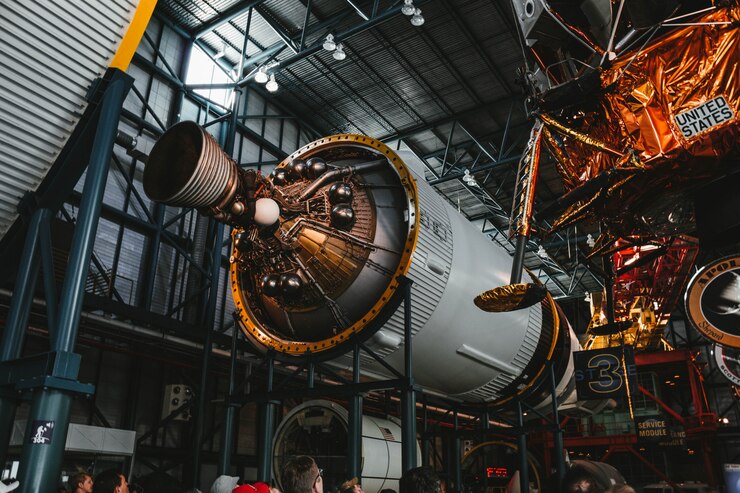In the realm of aviation, Pratt & Whitney holds a significant position as a leading manufacturer of jet engines. However, the recent announcements and implementations of layoffs have raised questions and concerns within the industry. Understanding these layoffs requires diving into the company’s operations and the broader aviation landscape. In this article, you’ll gain insight into the reasons behind Pratt & Whitney’s decision to downsize their workforce. Let’s explore the factors influencing the company’s strategic moves and how these decisions affect employees and the industry.
A Brief Look at Pratt & Whitney
Pratt & Whitney, a subsidiary of Raytheon Technologies, is well-known for producing high-performance jet engines. With numerous innovations, their engines power both commercial and military aircraft globally. Established in 1925, this company has a long-standing reputation in the aerospace sector. Throughout its history, Pratt & Whitney has been at the forefront of technological advancements in aviation. Their engines are renowned for efficiency, safety, and reliability.
The company’s headquarters are in East Hartford, Connecticut, and they employ thousands of talented individuals worldwide. As part of Raytheon Technologies, Pratt & Whitney benefits from vast resources and synergy, helping them maintain a competitive edge. However, like any large corporation, they face challenges in balancing operational costs and maintaining a competitive workforce.
Pratt & Whitney Layoffs 2025
The announcement of layoffs in 2025 is a reminder of the ongoing challenges faced by Pratt & Whitney. Although the company has not disclosed the exact number of positions affected, it’s clear that the decision is a move towards cost-saving. The aim is to trim costs by approximately $40 million, which requires some tough decisions. Unfortunately, this round of layoffs has primarily targeted senior employees, many of whom have been with the company for over four decades.
The decision to let go of seasoned staff comes with its challenges. On the one hand, these employees bring years of experience and knowledge. On the other, senior positions often come with high salary costs. Pratt & Whitney’s focus on reducing expenses means they have had to weigh the benefits of maintaining seasoned employees against the financial burdens.
Business Noted provides a detailed insight into how companies like Pratt & Whitney make such strategic decisions.
A Detailed Analysis of Pratt & Whitney 2024 Layoffs
To fully understand the context of the 2025 layoffs, it’s essential to examine the previous year’s events. Throughout 2024, Pratt & Whitney executed multiple layoffs as part of a broader strategy to consolidate their financial standing. Despite these efforts, it seems that cost-cutting measures weren’t fully realized, which led to additional job cuts in 2025.
During the 2024 restructuring, the company focused on non-essential roles, attempting to minimize impact on essential operations. The continuous adjustments were aimed at streamlining operations, aligning workforce capabilities with market demands, and ensuring future sustainability. However, the frequent layoffs over the past few years have undoubtedly left employees feeling unstable and uncertain about their future with the company.
One significant repercussion of frequent layoffs is the uneven distribution of workload among remaining employees. With fewer hands on deck, those who stay often find themselves stretched and overworked. This leads to reduced morale and increased stress, which can affect overall productivity and quality of work. Additionally, rumors of further layoffs continue to circulate, compounding the unease within the workforce.
Key Points Behind These Layoffs
The decision to proceed with layoffs is never taken lightly, and several underlying reasons support Pratt & Whitney’s choice. One of the primary drivers behind these job cuts is the need to optimize costs and maintain financial stability. This objective aligns with the broader goals of Raytheon Technologies, which oversees Pratt & Whitney’s parent company. By keeping costs under control, the company can enhance its market competitiveness and ensure sustainable growth.
Another factor influencing layoffs is the need to adapt to industry changes and technological advancements. As the aviation sector becomes more focused on environmental concerns and fuel efficiency, companies must evolve. Innovations in engine design, renewed focus on sustainable technologies, and shifts in customer preferences all play a role in reshaping Pratt & Whitney’s priorities.
External market conditions also contribute to workforce adjustments. Changes in demand within the commercial and military sectors necessitate realignment in company resources. Global trade tensions, fluctuating fuel prices, and supply chain disruptions present additional challenges that require strategic responses.
Finally, it’s crucial to consider the impact of economic fluctuations on Pratt & Whitney’s financial performance. Economic downturns, such as those experienced in recent years, have further constrained budgets and forced the company to reconsider its workforce requirements. Adapting to these changes ensures the company’s long-term viability.
Are Layoffs Part of a Bigger Industry Trend?
Looking beyond Pratt & Whitney, it’s clear that the aviation industry as a whole is undergoing significant changes. The aviation sector is experiencing shifts in demand, digital transformation, and increasing pressure to be environmentally conscious. As companies seek to become more efficient and meet evolving market preferences, workforce adjustments are becoming more commonplace.
Globally, many aerospace companies are adjusting their business models to incorporate new technologies, optimize operations, and improve customer experiences. Automation, data analytics, and artificial intelligence are playing pivotal roles in transforming the industry. These innovations, while exciting, have led to a reevaluation of existing job roles and skillsets.
However, the industry’s reliance on innovation and adaption to customer needs has also propelled job creation in specialized areas. As traditional roles are phased out, new opportunities in research and development, digital transformation, and sustainability solutions emerge. Thus, while layoffs are occurring, there are new avenues for growth within the industry.
Navigating these changes means companies like Pratt & Whitney need to carefully balance their existing workforce while preparing for future demands. Collaboration with educational institutions and policymakers to ensure workforce readiness is essential. By preparing employees for the necessary shifts, the aviation industry can continue to thrive amidst inevitable change.
Pratt & Whitney Business Model
Understanding Pratt & Whitney’s business model sheds light on how they navigate complex challenges in the aviation sector. As a jet engine manufacturer, the company primarily serves the commercial aviation and military sectors. Their robust portfolio includes engines like the Pratt & Whitney GTF engine family, known for fuel efficiency and reduced emissions.
Innovation is at the heart of their business strategy, driving research and development initiatives to deliver cutting-edge engine technologies. This dedication ensures they remain at the forefront of the aviation industry and stay competitive. However, R&D investments are also costly, impacting the company’s budget allocations.
To stay profitable, Pratt & Whitney has implemented partnerships and alliances with aircraft manufacturers and airlines. These collaborations help penetrate new markets and expand their customer base. Aftermarket services, including maintenance, repair, and overhaul (MRO), also significantly contribute to their revenue stream.
Despite these strengths, the company faces significant challenges, particularly in managing costs and staying adaptable to market changes. Streamlining operations and optimizing resources are ongoing priorities. Balancing growth initiatives with fiscal responsibility is essential to maintain their leadership position.
Financial Performance Of Pratt & Whitney
Pratt & Whitney’s financial performance has seen fluctuations in recent years, partly due to economic shifts and industry challenges. As a subsidiary of Raytheon Technologies, they’ve demonstrated resilience and adaptability. But, like many companies, they’ve had to adapt to shifts in global economic conditions.
The need for continual innovation in engine technology is both an opportunity and a financial demand. Significant investments in R&D are necessary to ensure the competitive edge in a fast-paced industry. Yet, these investments can strain finances, necessitating cost-saving measures like layoffs.
While their products remain in high demand, external factors such as geopolitical tensions and supply chain disruptions have impacted financial stability. As global markets recover from recent downturns, financial improvement is expected. However, maintaining fiscal responsibility remains crucial.
Despite challenges, Pratt & Whitney’s long-term outlook remains positive. Their commitment to innovation, strong industry partnerships, and focus on sustainable solutions are paving the way for future success. While short-term adjustments like layoffs are difficult, they position the company for sustainable growth and continued leadership.
Conclusion
Pratt & Whitney’s recent layoffs reflect complex challenges that global companies face in a rapidly changing industry. While these measures are necessary to achieve cost-saving goals and maintain competitiveness, they undoubtedly impact employees and their families. As the aviation industry evolves, so too must the strategies of key players like Pratt & Whitney.
Understanding the motivations behind layoffs and their broader implications provides valuable insights into the company’s strategic direction. It emphasizes the importance of adapting to technological advancements, market demands, and financial constraints. For employees navigating this uncertain landscape, focusing on emerging opportunities and skills is key.
In this ever-changing context, we can expect companies like Pratt & Whitney to continue evolving. By staying informed and adapting to shifts in the industry, they can ensure their continued relevance and success.
For more on such industry updates, visit Business Noted.












